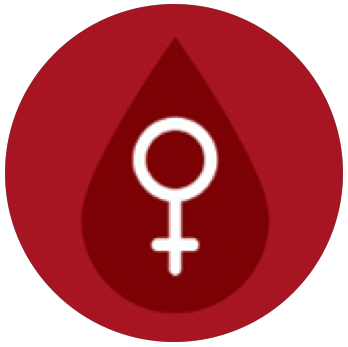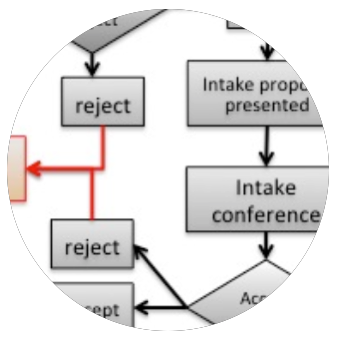My conference work began with research covering many of the leading contributors to the field of Buddhist Psychology, which is what equips me to envision a new function and role for the use of technology in the therapeutic treatment of trauma. My project itself is a digital art installation that was inspired by a variety of resources, which include, but are not limited to Buddhist psychology, Jungian psychoanalysis, abstract mysticism, eye movement desensitization and reprocessing (EMDR), and psychedelic shamanism.
Speech-to-text software recognition programs, though potentially useful tools, have yet to be widely implemented. This paper documents a study on the potential benefits and drawbacks of speech-to-text recognition software programs within a clinical context. For this study two experiments were conducted using two different speech-to-text software programs- Apple’s Dictation, which is free, and Dragon NaturallySpeaking by Nuance, which has a retail price of $200.
In the study a portion of a clinical intake interview was simulated, and the effects of background noise and dictation speed on dictation accuracy was examined, with a view to evaluating the use of such tools by people with physical disabilities. It was found that background noise did play a factor, along with a faster speed which ultimately influenced accuracy. These results, though not conclusive given a small sample size, suggest a direction and framework for future studies.
My project is a web interface to a statistical analysis python script. The goal of the project is to allow researchers to update their ongoing research projects in real-time.
The example illustrated here is an analysis of the results of the Harvard Trauma questionnaire given to torture survivors who did and did not survive sexual assault. My tool, however,can readily be modified to perform a student t-test or a welch's t-test on any data set.
The intention behind this project is to create a generic tool that can be used to create dynamic, real-time research projects from a variety of datasources. Although this example uses test data, it is designed to work with two such sources: the Program for Survivor's of Torture research database and the Public Goods Games psychology experiment project.
My conference project is a visualization of conflicts that have taken place in Africa between 1975 and 2015. The visualization looks at death count, reason for conflict, status of conflict, and dates the conflict took place.
This project is meant to explore both the human rights issues and the health benefits associated with each of the ingredients in each food item on a plate of food, a typical lunch at Nimai's Bliss Kitchen. The geographical representation of this plate of food is a map with two views- one that presents the top three producers of each ingredient, and one that presents human rights issues connected to each ingredient. The health finder is a chord diagram connecting each ingredient to it's associated health benefits- with both Ayurvedic (traditional Indian medicine) and allopathic components.
Note that this project is not working at present because of an issue with the new Google Maps API. We are working on updating this project.
The Bellevue/NYU Program for Survivors of Torture (PSOT) is a comprehensive torture treatment center in the New York City area. It was established in 1995 by medical and mental health professionals at Bellevue Hospital to provide medical and mental health care, as well as social and legal services to survivors of torture and their family members. It is the first program of its kind in New York City.
This conference project is a web page titled "About Our Survivors". It is an extension to the current PSOT website that presently includes information regarding the organization’s work, public support, relevant news, publication, and resources. This new web page features the survivors enrolled in PSOT with the aim of helping the public learn more about them and the circumstances that led to their escape.
This web page comprises of 4 components. The first component is an overview of the general demographics of PSOT survivors. Charts and tables are included for data illustration purposes. The next component discusses the circumstances previously faced by the survivors such as female genital mutilation, political instability, and discrimination. The following component is an interactive map that displays information on survivor demographics by country and the final component features survivor stories. This is a story, a story about our survivors. Come explore, read, and learn, and be prepared to view the world through a different lens - the lens of our survivors.

I worked with the instructor Brian MacMillan to design and implement the Innovation Lab web site. Several use cases were created and tested.
The site uses the bootstrap.js responsive design framework as well as the angular and d3 javascript libraries.
The definition of assault is to make an attack on, whether it be a physical or verbal. There is a stigma around the clothing worn at the time of the assault which then results in victim blaming. We created this website to bring power to the survivor, to offer them a place to be able to share their story, and for others to see the array of clothing worn when an assault took place. We are working towards destigmatizing the clothing on the body of the assaulted. The goal is to stop the stigma on all kinds of assaults such as those based on race, gender, LGBTQ, religion, domestic, and sexual. For this website, we are asking for pictures from the neck down of what one was wearing, a similar outfit to what one was wearing, or even a drawn out picture of what the person who was assaulted was wearing. It is encouraged that the person submits a story along with their picture, however, it is not necessary. The story can be whatever they wish to share about themselves. We created this website to help the survivors feel comfortable and empowered to share their story with others. Each survivor will remain anonymous.
Note that this project is not working at present because the domain WhatIWoreWhenIWasAssualted.com has expired. We are working on transferring this project to a new domain.
Female Genital Mutilation is a crime against the female sex and identity that has devastating consequences on biological health and social roles. However, it also has a generationally significant impact upon the maturity and marriageability of female populations in the cultures where it is practiced. By looking at the history of the practice, its perceived and actual consequences and implications, and the global response, I hope to gain an understanding of how it has impacted women and their culture. Ultimately, by navigating the nuances of activist and practicing communities, I hope to find ways to reduce prevalence and improve aftercare and sexual well being. Most importantly, however, through quantitative evidence, I wish to eradicate the stereotypes of female genital mutilation in the practicing cultures.
The purpose of this research is to understand the extent to which people involved in what is perceived as voluntary sex work experience mental health problems and are exposed to psychological trauma related to their work. This study also aims to compare some common perceptions regarding the morality, background, and lifestyle of voluntary sex workers with the information provided by sex workers themselves.
Note that this project is not working at present because the domain UnprovenSexWorkPerceptions.com has expired. We are working on transferring this project to a new domain.
My conference project is to document the operations of the Program for Survivors of Torture (PSOT) and make suggestions as to how operational efficiency can be improved. The major areas of work at PSOT were analyzed, including inquiry interviews of prospective clients, emergency medicine interviews, intake interviews, psychology, psychiatric and social work counseling, asylum and citizenship applications, and advocacy.
Because my project uses internal PSOT documents it is password protected. If you would like to see my work please contact Brian MacMillan (brianmacmillanteacher@gmail.com) and he will arrange it.
My conference project is an animation called 18 months that illustrates how many puppies an unfixed female can cause to be born over three gestation periods (approximately 18 months)










